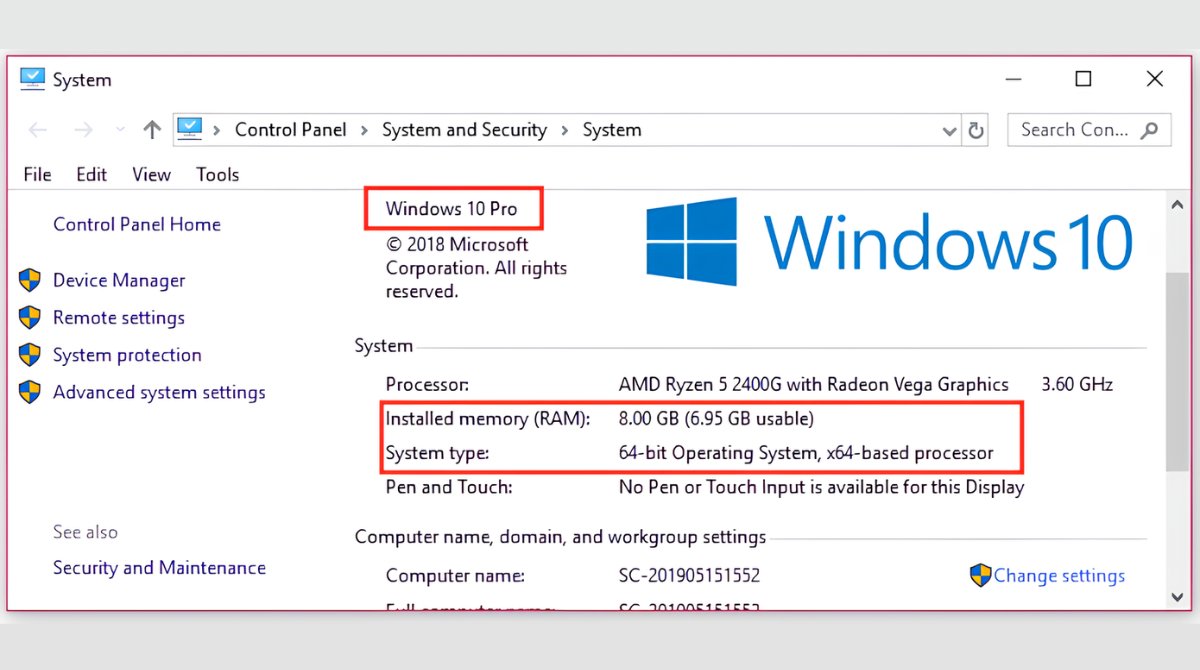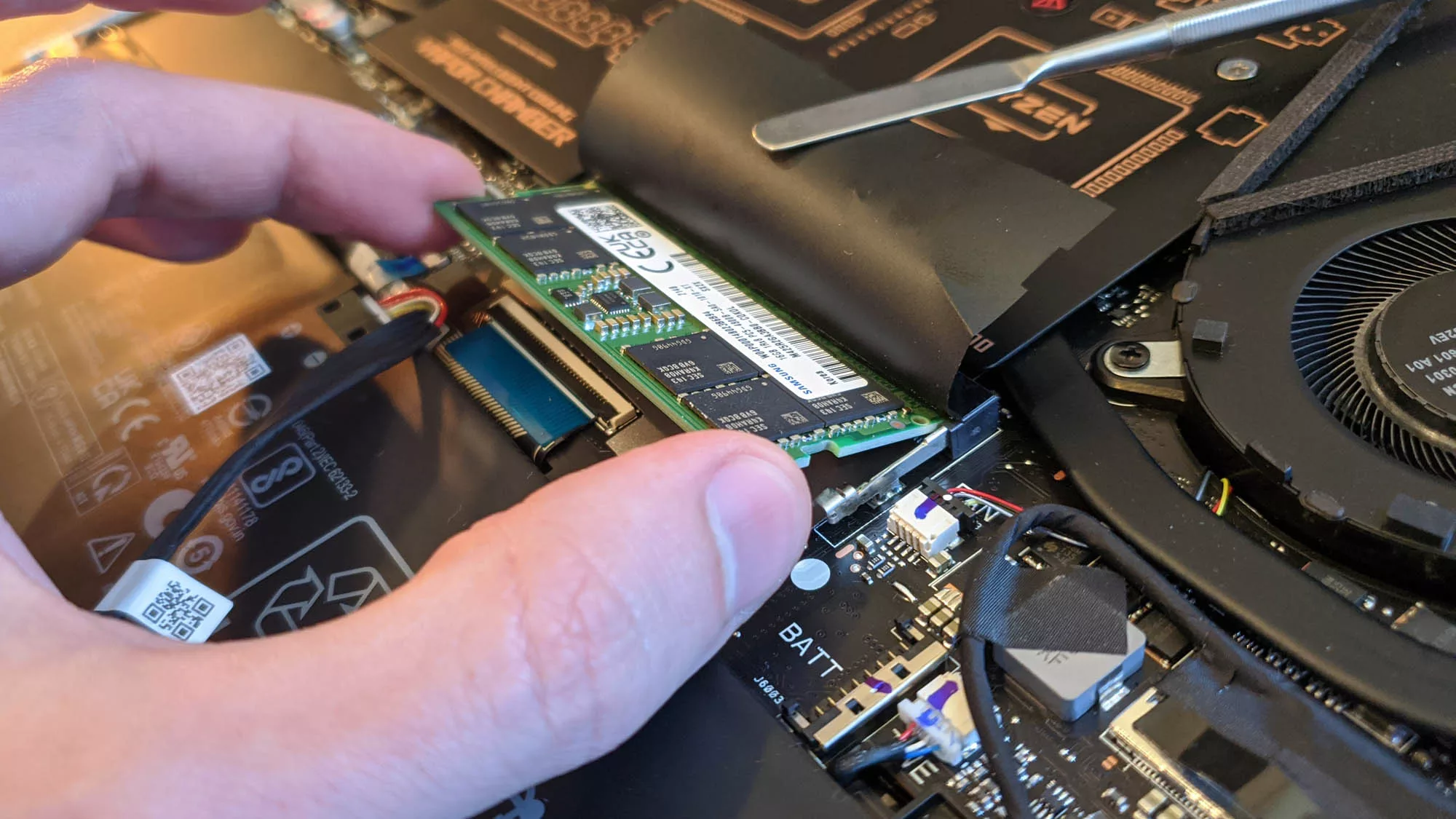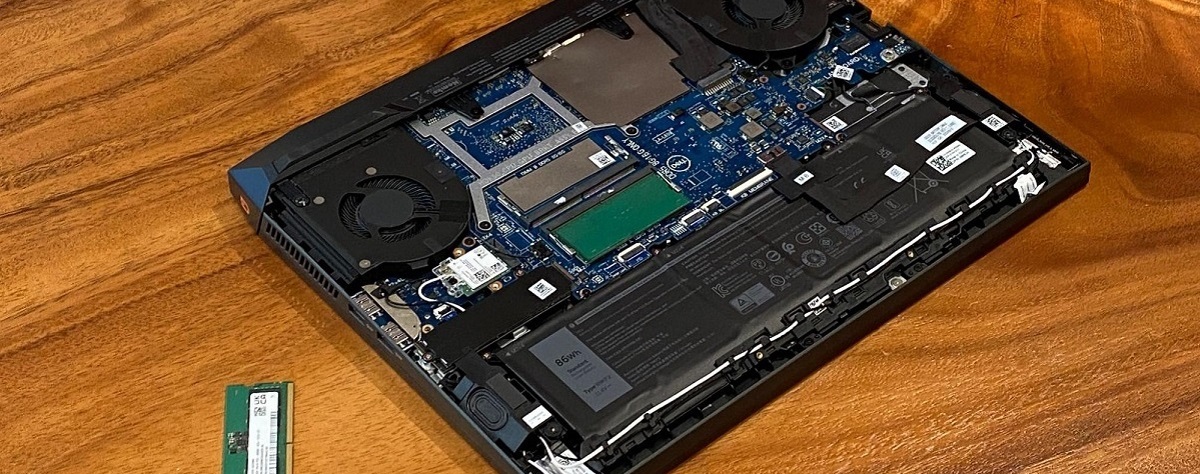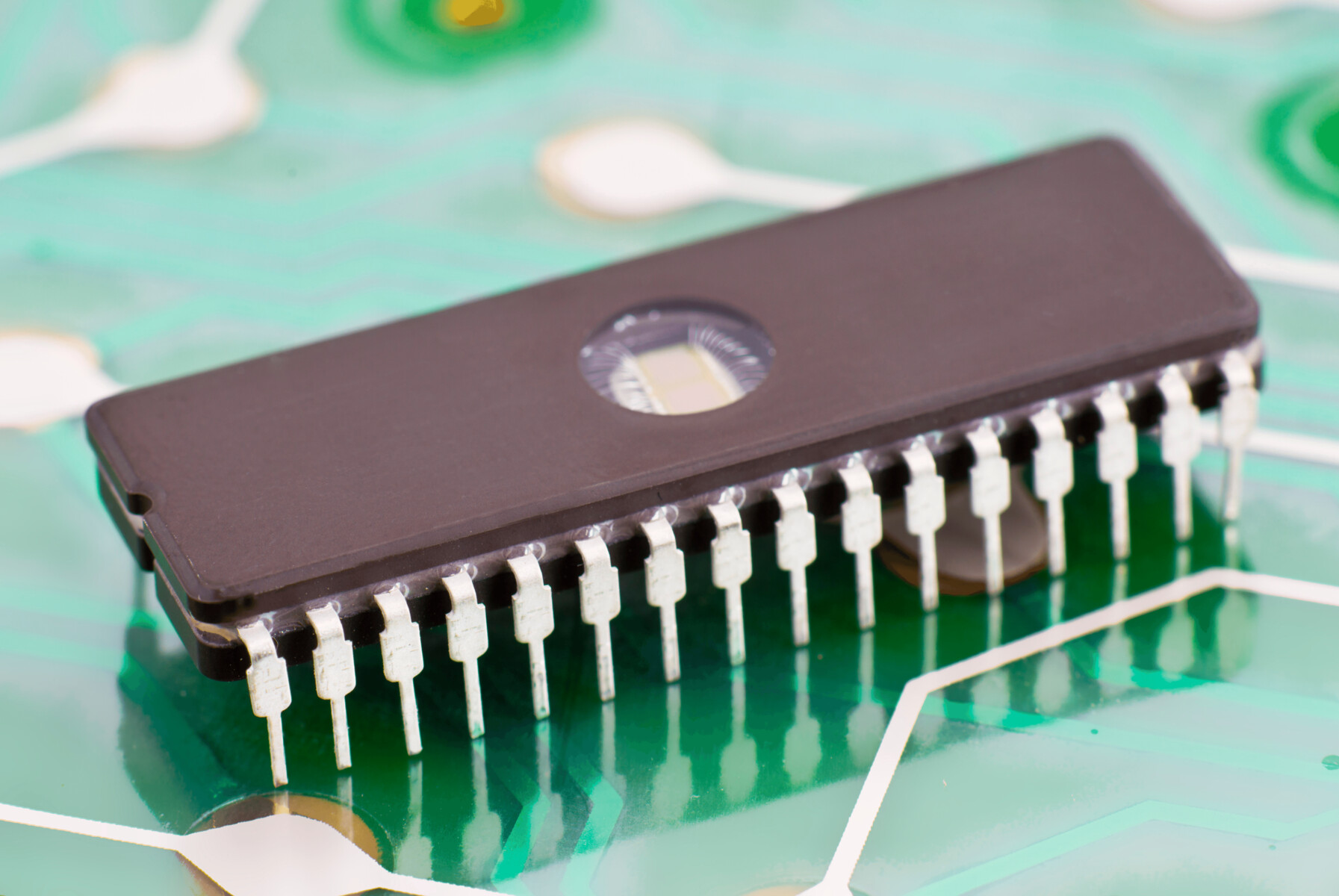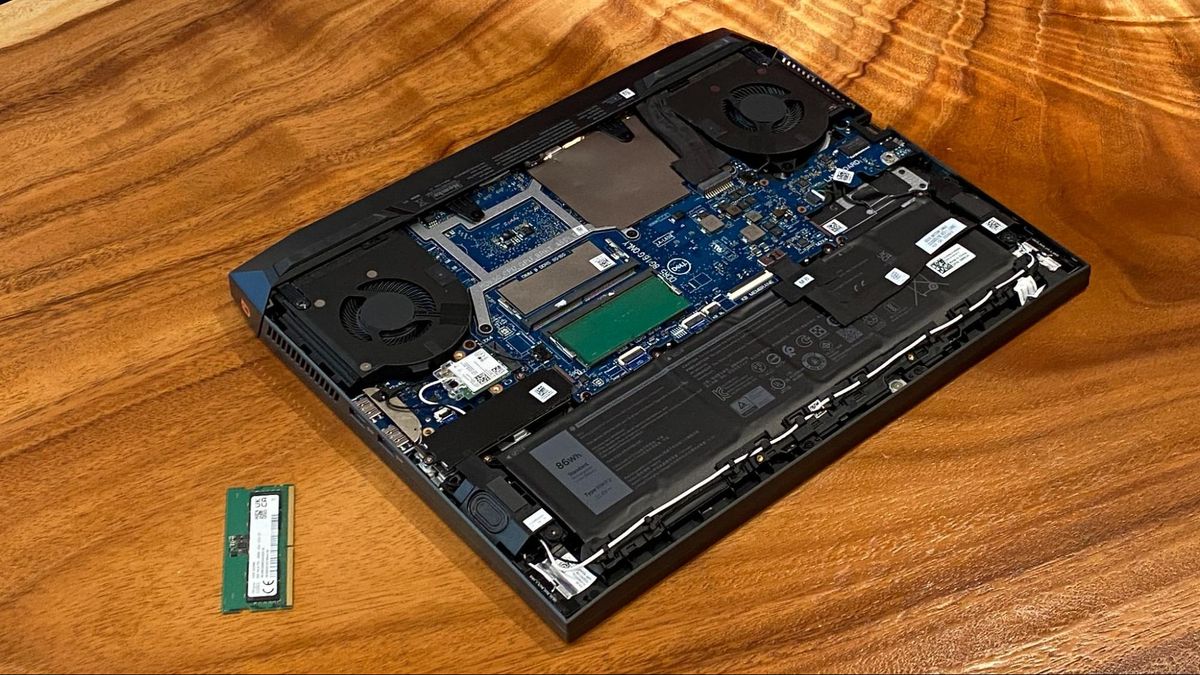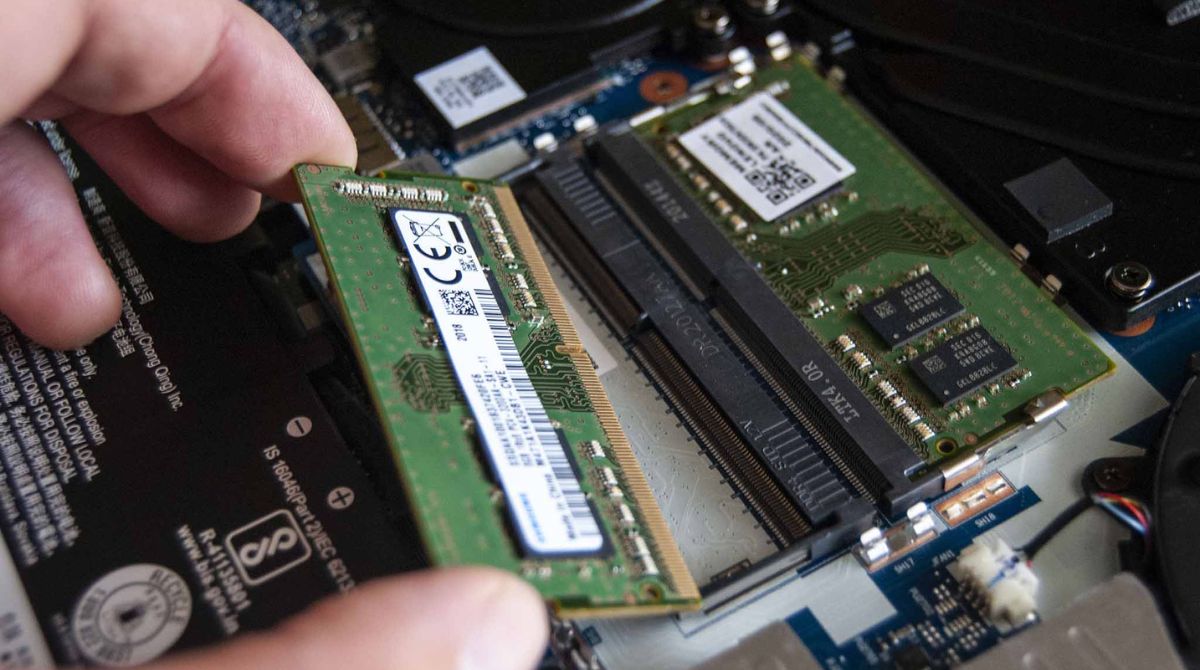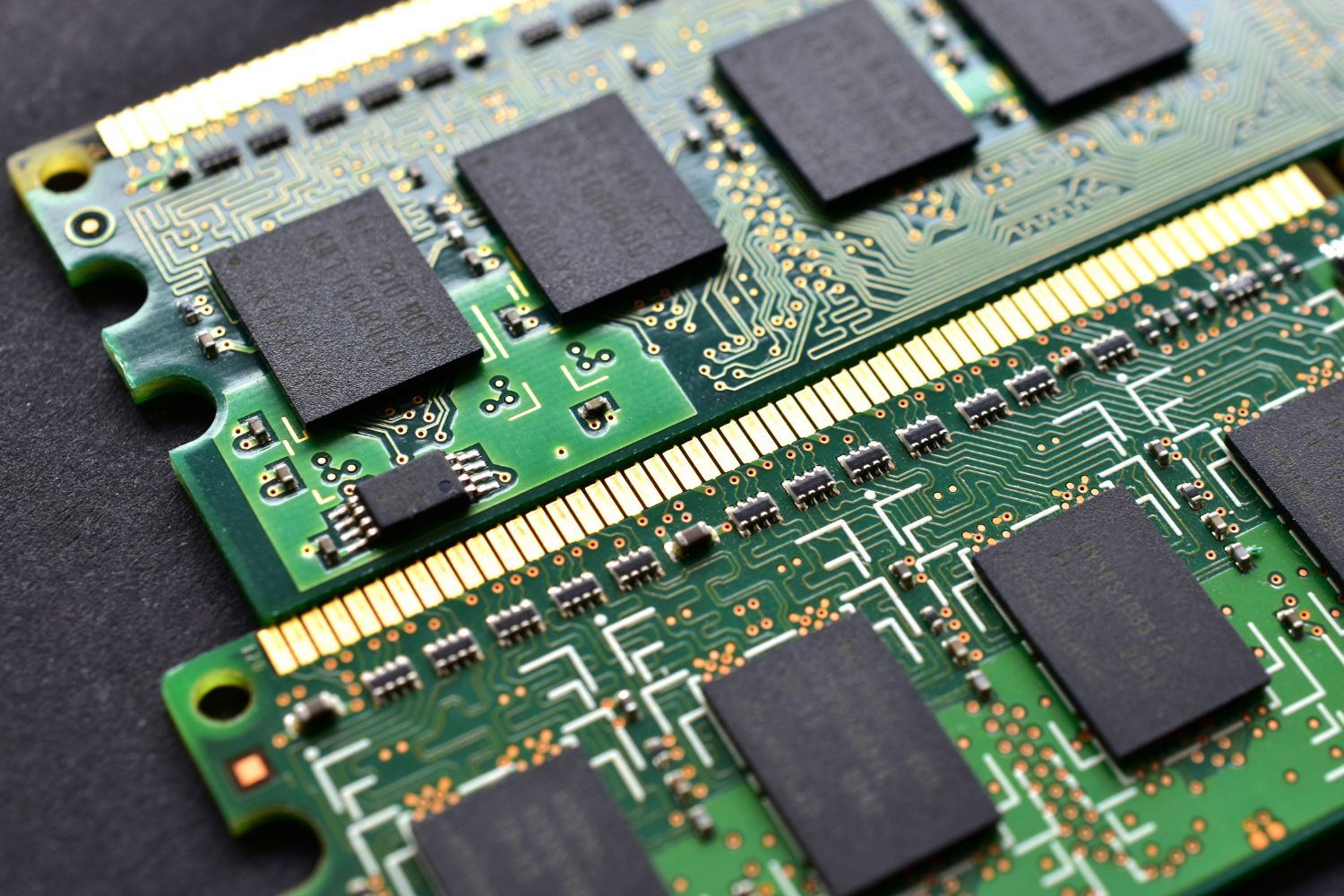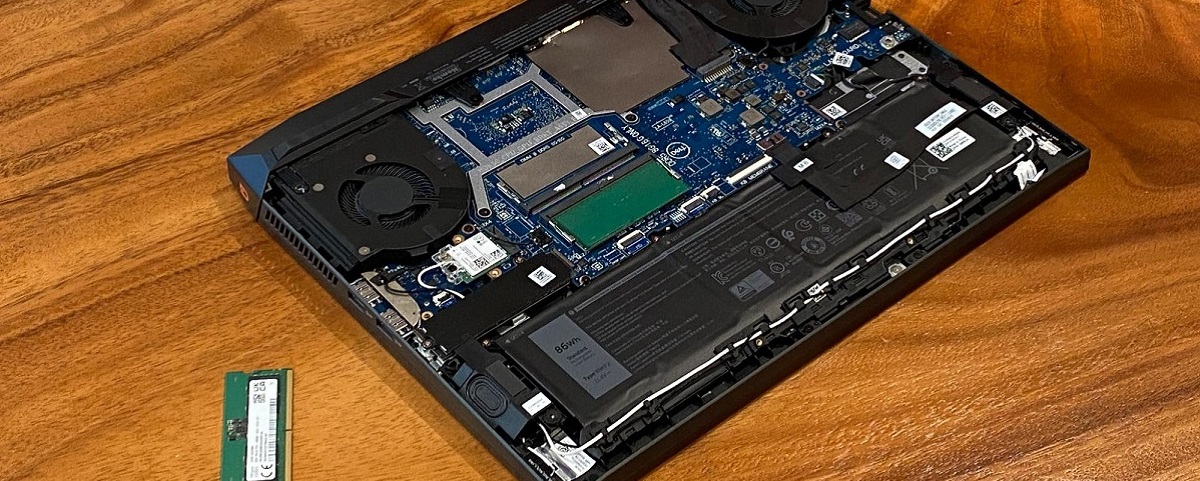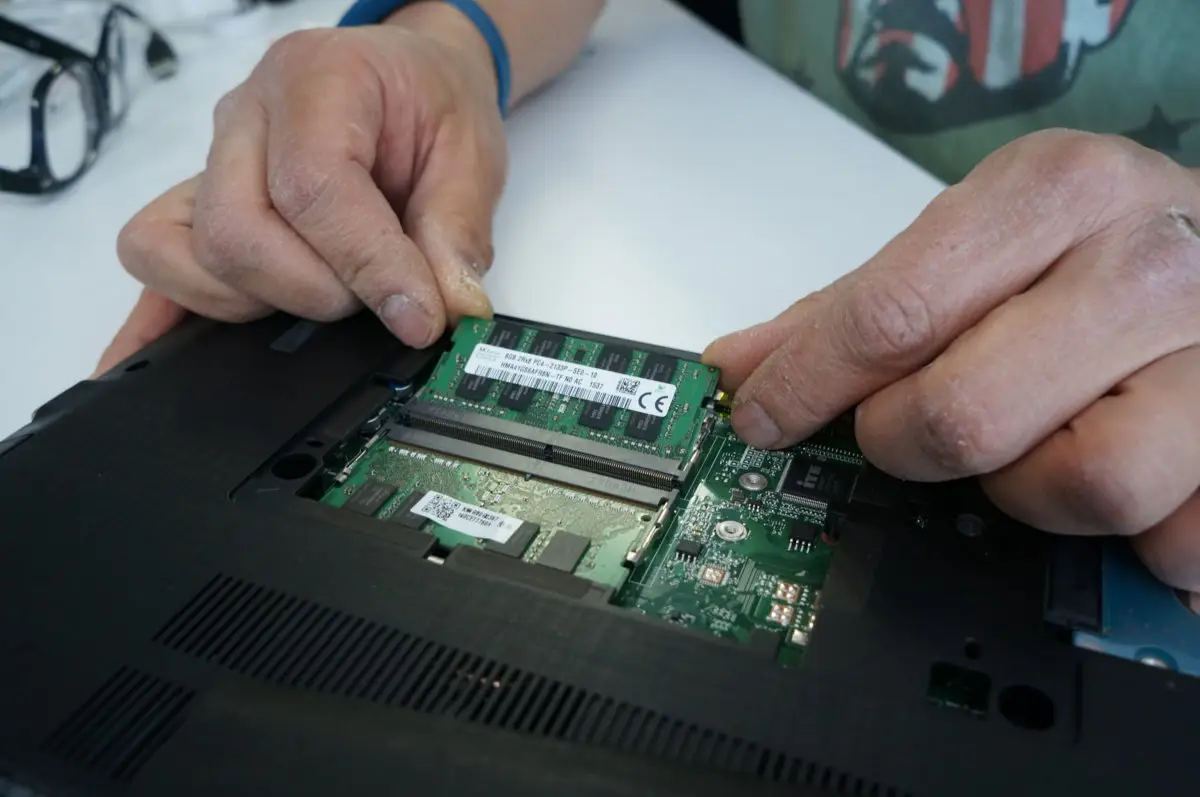Introduction
Welcome to our comprehensive guide on how to find what RAM is compatible with your laptop. RAM, or Random Access Memory, plays a crucial role in your laptop’s performance by providing temporary storage for data that your laptop needs to access quickly. Upgrading your RAM can significantly boost your laptop’s speed and overall performance.
However, before going out and purchasing new RAM modules, it’s important to make sure that they are compatible with your laptop. Installing incompatible RAM can lead to system instability, crashes, and even potential damage to your laptop.
In this guide, we will walk you through the steps to determine the type, speed, and capacity of your current RAM, check your laptop’s RAM compatibility, identify the RAM slot type, choose the right RAM for your laptop, install the RAM, and test its compatibility and performance.
By following this guide, you can ensure that you choose the correct RAM for your laptop, maximizing its performance and avoiding any compatibility issues.
Let’s dive in and find out how to find what RAM is compatible with your laptop!
Checking Your Laptop’s Specifications
Before you start searching for compatible RAM for your laptop, it’s essential to gather some information about your laptop’s specifications. This will help you determine the type and capacity of RAM your laptop can support. Here are the steps to check your laptop’s specifications:
- Check the manufacturer’s website: Visit the website of your laptop’s manufacturer and navigate to the support or specifications section. Enter your laptop’s model number or serial number, and you should be able to find detailed information about your laptop’s specifications, including the RAM type, maximum capacity, and compatible speed.
- Check the user manual: If you still have the user manual that came with your laptop, it is an excellent resource to discover the specifications. Look for a section about upgrading the RAM or hardware specifications. It should provide the necessary information about the type and maximum capacity of RAM your laptop can handle.
- Use system information tools: On Windows, you can use the built-in System Information tool. Simply press Windows key + R, type “msinfo32,” and hit Enter. In the System Information window, navigate to the “System Summary” section, and you will find details about your laptop’s processor, installed memory, and other specifications. On macOS, click on the Apple menu, select “About This Mac,” and then click on the “More Info” button. In the System Information window, you can find information about your laptop’s hardware specifications.
- Third-party system information utilities: Alternatively, you can use third-party system information utilities like CPU-Z, Speccy, or HWiNFO. These tools provide detailed information about your laptop’s hardware, including the RAM type, speed, and capacity.
By following these steps, you should be able to gather the necessary information about your laptop’s specifications and get a better understanding of what RAM is compatible with your laptop. Once you have the information, you can proceed to the next steps in finding the right RAM for your laptop.
Determining the Type and Speed of Your Current RAM
Once you have gathered information about your laptop’s specifications, the next step is to determine the type and speed of your current RAM. This is important because you will need to match the specifications of your existing RAM when purchasing new RAM modules. Here’s how you can determine the type and speed of your current RAM:
- Use system information tools: Refer back to the system information tools mentioned earlier, such as the built-in System Information tool on Windows or third-party utilities like CPU-Z or Speccy. These tools provide detailed information about your installed RAM, including the type (DDR2, DDR3, DDR4) and speed (e.g., 1333MHz, 1600MHz).
- Physically inspect the RAM sticks: If accessing software tools is not possible or you prefer a hands-on approach, you can physically inspect the RAM sticks. Shut down your laptop, unplug it, and remove the bottom cover. Locate the RAM slots, where the RAM sticks are inserted. Carefully remove one of the RAM sticks from its slot. The RAM stick should have a label or an engraved marking that indicates its type (e.g., DDR3) and speed (e.g., PC3-10600).
- Search for your laptop’s model: If you’re still unsure about your RAM’s type and speed, search online for your laptop’s model along with the keywords “RAM type” or “RAM specifications.” You should be able to find resources or forums where users have discussed the specific RAM requirements of your laptop model.
Once you have determined the type (e.g., DDR3) and speed (e.g., 1600MHz) of your current RAM, make a note of these specifications. This information will be crucial when selecting new RAM modules that are compatible with your laptop.
In the next section, we will explore how to check your laptop’s RAM capacity to ensure you choose the right amount of RAM for your needs.
Checking Your Laptop’s RAM Capacity
Knowing your laptop’s RAM capacity is vital in determining how much RAM you can install and upgrade to. Having an understanding of your current RAM capacity will help you make informed decisions about adding more RAM to improve your laptop’s performance. Here’s how you can check your laptop’s RAM capacity:
- Use system information tools: Refer back to the system information tools mentioned earlier, such as the built-in System Information tool on Windows or third-party utilities like CPU-Z or Speccy. These tools will provide you with information about the total installed memory (RAM) on your laptop. It will typically be displayed in gigabytes (GB). Note down this value.
- Check the BIOS: Restart your laptop and access the BIOS settings. The process to enter the BIOS varies depending on the laptop manufacturer, but it is usually done by pressing a specific key (e.g., F2, Del, Esc) during startup. In the BIOS, navigate to the System Information or System Configuration section, where you can find details about your laptop’s RAM capacity.
- Refer to the manufacturer’s specifications: If you still can’t find the information about your laptop’s RAM capacity, visit the manufacturer’s website. Look for your laptop model’s specifications page, where they should mention the maximum supported RAM capacity.
By using one or more of these methods, you can determine the current RAM capacity of your laptop. This information will help you make accurate decisions when it comes to upgrading your laptop’s RAM.
In the next section, we will explore the concept of RAM compatibility and what factors you need to consider for a successful RAM upgrade.
Understanding the RAM Compatibility
RAM compatibility is a crucial factor when it comes to upgrading or replacing the RAM in your laptop. Incompatible RAM can cause various issues, including system instability, crashes, or even damage to your laptop. Therefore, it’s essential to understand the key factors that determine RAM compatibility. Here are the main considerations:
- Type of RAM: Your laptop will support specific types of RAM, such as DDR2, DDR3, or DDR4. It’s important to match the type of RAM to the one supported by your laptop. For example, if your laptop supports DDR3 RAM, make sure to purchase and install DDR3 RAM modules.
- Memory Speed: RAM modules have different speed ratings, such as 1333MHz, 1600MHz, or higher. It’s ideal to match the speed of your new RAM with the speed of your existing RAM, although it’s not always critical. If you install RAM modules with different speeds, they will run at the speed of the slowest module. However, it’s advisable to maintain consistency for optimal performance.
- Capacity: The capacity of RAM refers to the amount of memory it can store. It’s essential to consider the maximum supported capacity of your laptop. Installing RAM modules that exceed the maximum capacity may not be recognized or utilized by your laptop, leading to compatibility issues. Make sure to check your laptop’s specifications to determine the maximum RAM capacity it can support.
- Number of RAM slots: Laptops typically have a limited number of RAM slots available. It’s important to check how many slots your laptop has and consider the number of slots currently occupied by existing RAM modules. This will help you determine if you need to replace existing modules or add new ones to increase your laptop’s overall RAM capacity.
- Form factor and physical size: RAM modules come in different form factors, such as DIMM (desktop) or SO-DIMM (laptop). It’s crucial to choose RAM modules that match your laptop’s form factor and physical size to ensure proper installation and compatibility.
Understanding these compatibility factors will help you choose the right RAM for your laptop. In the next section, we’ll guide you on how to identify the RAM slot type in your laptop.
Identifying the RAM Slot Type
Identifying the RAM slot type in your laptop is essential when it comes to purchasing and installing new RAM modules. Different laptops may have different types of RAM slots, and it’s crucial to ensure compatibility between the RAM slots and the RAM modules you plan to install. Here’s how you can identify the RAM slot type in your laptop:
- Manufacturer’s website: Visit the website of your laptop’s manufacturer and navigate to the support or specifications section. Enter your laptop’s model number or serial number, and you should be able to find detailed information about your laptop’s RAM slot type, such as DDR3 or DDR4.
- Visual inspection: Shut down your laptop, unplug it, and remove the bottom cover. Locate the RAM slots, where the RAM modules are inserted. Examine the slots and look for any label or marking that indicates the RAM slot type. It may be printed directly on the slot or mentioned on a nearby label. Common RAM slot types include SO-DIMM (laptop) and DIMM (desktop).
- Consult the user manual: If you still have the user manual for your laptop, it can be a valuable source of information about the RAM slot type. Look for a section about hardware upgrades or specifications, where they may mention the type of RAM slot your laptop supports.
- Online resources and forums: If you’re unable to find information through the above methods, you can search online for your laptop’s model along with terms like “RAM slot type” or “RAM compatibility.” Other users or online forums discussing the specific laptop model may shed light on the type of RAM slot used.
Identifying the RAM slot type is crucial as it ensures that you purchase RAM modules that are compatible with your laptop. Once you have determined the RAM slot type, you can proceed to choose the appropriate RAM modules for your laptop, ensuring a successful installation.
In the next section, we will guide you on how to choose the right RAM for your laptop based on its compatibility and your specific needs.
Choosing the Right RAM for Your Laptop
Choosing the right RAM for your laptop is crucial to ensure compatibility and optimal performance. By considering the laptop’s specifications, RAM type, speed, capacity, and form factor, you can make an informed decision. Here are the key steps to choose the right RAM for your laptop:
- Refer to your laptop’s specifications: Consult your laptop manufacturer’s specifications or user manual to identify the supported RAM type, speed, and maximum capacity. This information will serve as a guideline in selecting compatible RAM modules.
- Match the RAM type and speed: Ensure that the type and speed of the new RAM modules you choose match your laptop’s requirements. If your laptop supports DDR3 RAM at 1600MHz, for example, purchase DDR3 RAM modules with the same speed rating.
- Consider the RAM capacity: Determine how much RAM you need based on your intended usage. If you use resource-intensive applications or multitask heavily, upgrading to a higher capacity (e.g., 8GB or 16GB) can provide better performance. However, if you have a specific budget or don’t require extensive multitasking, sticking with the minimum recommended RAM capacity may be sufficient.
- Ensure form factor compatibility: Consider your laptop’s form factor (SO-DIMM for laptops or DIMM for desktops) when choosing RAM modules. Ensure you purchase RAM modules that match your laptop’s form factor for a proper fit and compatible installation.
- Check for reputable brands and reliable sellers: When purchasing RAM modules, consider reputable brands known for their quality and reliability. Additionally, ensure you buy from trusted sellers to receive genuine products and reliable after-sales support.
By following these steps, you can choose the right RAM modules for your laptop, ensuring compatibility and optimal performance. It’s important to note that upgrading your laptop’s RAM can significantly enhance its speed and overall performance, making it a worthwhile investment.
In the next section, we will guide you through the process of installing the RAM modules into your laptop.
Installing the RAM
Once you have purchased the appropriate RAM modules for your laptop, it’s time to install them. The process may vary slightly depending on your laptop model, but here is a general guide to help you with the installation:
- Prepare your laptop: Shut down your laptop, unplug it from the power source, and place it on a stable surface. Remove any external peripherals, such as USB drives or cables, to ensure a hassle-free installation process.
- Locate the RAM slots: Remove the bottom cover of your laptop to access the RAM slots. The number and location of the RAM slots may vary based on your laptop model. Refer to your laptop’s documentation or online resources if you’re unsure about the location of the RAM slots.
- Remove existing RAM (if necessary): If you’re replacing existing RAM modules, carefully remove them by pushing the retaining clips or levers on the side of the RAM slots. Gently pull the module out at a slight angle to release it from the slot.
- Install the new RAM: Take your new RAM modules and align the notches on the module with the keys in the slot. Insert the module into the slot at a 45-degree angle and press it down firmly until it clicks into place. Make sure the retaining clips or levers secure the module in place.
- Double-check the installation: Once you have installed all the new RAM modules, ensure they are inserted correctly and secured firmly. Give them a gentle wiggle to confirm they are properly seated in the slots.
- Replace the bottom cover: Put the bottom cover back on your laptop, making sure it is aligned correctly and all screws are tightened. Be careful not to overtighten the screws, as it could damage the laptop’s casing.
- Power up your laptop: Plug in your laptop, power it on, and wait for it to boot up. Once your laptop starts up, it should recognize the new RAM modules automatically. You can verify the installation by checking the system information, where it should display the new RAM capacity.
It’s important to handle the RAM modules with care, avoiding excessive force or bending. If you encounter any difficulties during the installation process or have concerns, refer to your laptop’s documentation or seek assistance from a professional.
In the next section, we will discuss how to test the RAM compatibility and performance to ensure everything is functioning correctly.
Testing the Compatibility and Performance
After installing the new RAM modules in your laptop, it’s crucial to test their compatibility and performance to ensure everything is functioning correctly. Here are some steps you can take to verify the RAM’s compatibility and performance:
- Boot up your laptop: Power on your laptop and let it start up as usual. Ensure that it boots up without any issues and reaches the desktop or login screen smoothly.
- Check the system information: Open the system information tool on your laptop and verify that it displays the new RAM capacity. It should show the correct amount of RAM based on the modules you installed. This confirms that the laptop recognizes and detects the new RAM correctly.
- Run memory diagnostic tools: To test the compatibility and stability of the new RAM modules, you can use memory diagnostic tools. Both Windows and Mac operating systems come with built-in memory diagnostic tools that can help identify any potential issues or errors with the RAM. Run these tools and follow the on-screen instructions to initiate the memory test.
- Perform system stress tests: To evaluate the performance of the new RAM, you can run system stress tests or perform tasks that require intensive RAM usage. Open multiple applications simultaneously, work with large files, or engage in activities that previously put a strain on your laptop’s resources. Monitor the system’s performance and check for any improvements in multitasking, speed, and responsiveness.
- Monitor for system stability: Pay attention to your laptop’s performance and stability during regular usage. If you notice any sudden freezes, crashes, or unusual behavior after installing the new RAM, it may indicate compatibility or setup issues. In such cases, you may need to consult professional support or consider troubleshooting steps to resolve the problem.
By following these steps, you can test the compatibility and performance of the new RAM modules. This will ensure that your laptop is utilizing the upgraded RAM correctly and that you are experiencing the desired improvements in speed and overall performance.
If everything seems to be working well and your laptop is performing optimally, congratulations! You have successfully upgraded your laptop’s RAM. Enjoy the enhanced experience and productivity that comes with increased memory capacity.
Conclusion
Upgrading or replacing the RAM in your laptop can significantly improve its performance, allowing you to run more demanding applications and multitask with ease. However, it’s crucial to determine the compatibility of the RAM modules with your laptop to avoid issues and ensure a successful upgrade.
In this guide, we covered the essential steps to help you find what RAM is compatible with your laptop. By checking your laptop’s specifications, determining the type and speed of your current RAM, and understanding the RAM compatibility factors, you can make informed decisions when selecting new RAM modules.
We also discussed how to identify the RAM slot type in your laptop and provided instructions on choosing the right RAM based on compatibility and your specific needs. Additionally, we walked you through the installation process, testing the compatibility and performance of the new RAM, and monitoring the system for stability.
Remember to handle the RAM modules with care during installation, as they are delicate components. If you encounter any difficulties or have concerns, consult your laptop’s documentation or seek assistance from a professional.
By following this guide and upgrading your laptop’s RAM, you can unlock its full potential and enjoy improved speed, responsiveness, and overall performance.
Now that you have the knowledge and understanding, it’s time to take action and find the compatible RAM modules for your laptop. Upgrade your RAM and experience the difference!







